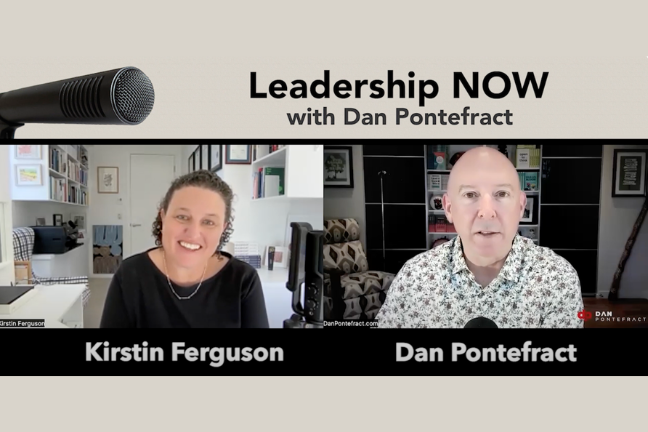
Complete the Head & Heart Leader Scale™ and receive a free, personalised report here.
Complete the Head & Heart Leader Scale™ and receive a free, personalised report here.
Kirstin Ferguson
Kirstin Ferguson graduated from the Australian Defence Force Academy (ADFA) with a Bachelor of Arts (with Honours) in 1993. After several years as a RAAF officer at an F-111 Squadron, Kirstin obtained a Bachelor of Laws (with Honours) from QUT and was admitted as a solicitor in NSW and QLD. After spending time working in London with the law firm Ashurst Morris Crisp, Kirstin began working with the Australian corporate law firm Deacons, where she is currently employed as the firm’s Director of Corporate Services and Chief Operating Officer to the firm’s Business Unit Leaders. Kirstin was awarded a Churchill Fellowship in 2003 to investigate innovative strategies for providing non-financial support to military widows and families after a death in the Australian Defence Force. Her report was submitted by the Chief of the Defence Force, General Cosgrove, to the recent Senate Inquiry into Military Justice.
April, 2025.
As I approach retirement after almost 30 years in law firm management, I am astonished at the number of changes which have occurred in the practice of law in the first quarter of this century. Who would have anticipated that the number of legal practices in Australia, almost 12 000 in 2005 would have been reduced in half, that lawyers would no longer bill in six minute increments and that courts would no longer accept hard copy documents. It is certainly a very different legal environment to that of the 20th century and one where lawyers are now required to not only have excellent technical legal skills, but a breadth of technological adaptability and project management experience in order to successfully cater to their clients.
The first major event which had a significant impact on legal practice was the recession of 2015 which forced law firms of all sizes to reconsider how they would continue to operate in a constricted market. The consolidation of sole practitioners and small firms has resulted in a significant change to the suburban legal landscape. Much in the same way that doctors realised the cost benefits associated with operating in joint premises at the start of this century, lawyers have also been required to change. The newly created small and medium sized firms have found themselves forming multidisciplinary practices with other professionals such as accountants, conveyancers, mortgagees and real estate agents to target the latent legal market of individuals (the traditional ‘mum and dad’ client), as well as small businesses.
Large firms have also consolidated since the recession and followed the path of the major accounting firms, reducing from eight large national firms to five. The complex, high value corporate work continues to be dominated by the large corporate firms; however client expectations and methods of billing changed considerably after the recession of 2015.
Clients soon became unwilling, and often unable, to pay large legal fees and partner hourly rates which were once the preserve of the top law firms. Firms have had to find new and acceptable ways to charge for their services to increasingly savvy purchasers of legal advice. Fixed fees are now the norm and hourly billing and six minute increments are no longer common place. Many large firms have institutionalised their key corporate clients by accepting an annual retainer to remain the preferred legal provider. The US law firm Le Boeuf, Lamb, Greene & Macrae first established this as a mainstream arrangement with Alcoa Corporation early this century but it took some time for such an approach to become common in Australia. Whilst there was initially some resistance to this approach, firms soon realised that if an appropriate and acceptable retainer fee was established, it soon wed the law firm to the organisation in a way which they had always sought, but which was always elusive when billing only from matter to matter.
Large corporate firms have now found themselves virtually in house counsel for their clients and in house counsel departments have been reduced accordingly. This has seen a return of many general counsels back into the large firms. Another phenomenon has been the proliferation of the contract lawyer practising in a niche area and moving between firms on an as needs basis. This has worked well for firms given that the market has constricted since the recession and firms are now able to utilise niche lawyers on an as required basis.
The other significant event of the past 20 years was the major law firm scandal of 2020. The similarities to the collapse of Arthur Anderson at the turn of the century have been well documented. As a result of the scandal, both the public and government demanded that the legal profession no longer be allowed to continue to regulate their own behaviour and standards. As a result, state law societies are now monitored and controlled by a quasi-government body established to oversee the performance of practitioners. This has been accepted reluctantly by the legal fraternity; however tensions between regulatory bodies and local lawyers continue to simmer, in part due to the ever increasing number of professional negligence claims launched by aggrieved clients which has been made easier by technology automating the process.
Technology has clearly been the major factor changing the face of legal practice, whether in a large or small firm. Law students now study legal technology and legal knowledge management as a core subject during their law degrees. Those lawyers with the ability to rapidly adapt to new technology and assimilate this into their practices are the most successful and it is no longer possible to be a rainmaker solely on business development skills and legal knowledge. Furthermore, those lawyers regarded as not having advanced technology skills have sometimes found themselves the subject of professional negligence claims by their clients.
Technology has allowed for much more accurate matter management for clients. At the turn of the century, quoting for complex corporate or litigation advice was, at best, somewhat of an educated guess. Artificial intelligence technology now enables clients to be given a very accurate view of how much a matter will cost at various stages in the process, as well as a surprisingly accurate view of the likelihood of success. In addition, matters such as a complex due diligences are now highly process driven and depend almost wholly on technology rather than human input.
Voice recognition technology is commonplace and every lawyer carries with them a small lightweight computer, similar to a laptop used at the turn of the century, but much smaller. These are completely wireless and capable of communication via video, voice or phone. The storage capacity of these machines continues to increase at a rapid rate and lawyers can now carry the equivalent of their entire case history and files with them at all times. No documents are submitted in hard copy to the courts, and all are moved and filed via personal machines. The days of trolleys of material being taken to court are long gone, as well as registration and filing clerks.
The final significant development has been the dramatic increase in mediation and arbitration. Whilst both have been a fundamental part of legal practice since the end of the last century, over the past 20 years it has become the dominant component of virtually all civil legal disputes, and an increasing number of criminal guilty plea matters. Clients continue to seek to avoid going to court due to the inherent cost, delays and often poor media reporting which can accompany it. However, the ramification of many years of mediation has been a stagnation and reduction in the number of judgements and previously landmark decisions. Key questions of law are now often settled by retired judges and professional mediators behind closed doors where the settlement and decision usually remains confidential. Over the past 20 years this has been a significant issue for the development of the legal system and there is evidence that in the majority of cases, the courts are no longer perceived as a valued resource of the large corporate client.
It is hard to accurately predict what the practice of law will be like 25 years from now, in 2050. But I suspect technology will continue to play a significant role, as will the constant pursuit of increased profits and reduced costs. This is certainly a goal that lawyers continue to seek, whether during the last century or half way to the next.




